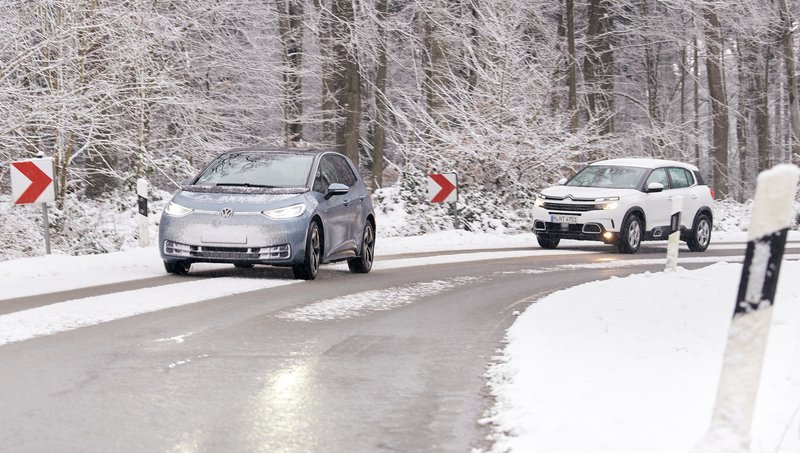Safe driving in winter: three tyre-related errors that must be avoided
- Late changing, insufficient pressure and a resource-intensive driving style: Continental tyre expert Andreas Schlenke explains how handling winter tyres in the wrong way endangers driving safety and reveals how errors can be avoided
Hanover, December 2021. Winter is certainly the most unpopular season for motorists. In addition to the winter driving impairments, they make it more difficult for themselves due to insufficient preparation and erratic behaviour in road traffic. Continental tyre expert Andreas Schlenke points out situations that should be avoided in order to get safely through the cold season.
Error 1: Late tyre change
When you experience the first frosty morning on the way to work and are caught thinking about changing tyres on your summer tyres, then it’s high time for winter tyres or, alternatively, all-season tyres. Winter tyres are extremely important for road safety, especially in regions with heavy snow or mountainous roads. The winter tyre has a different rubber compound that delivers better adhesion and brake performance in the cold. The profiles are also specially shaped for wet and cold roads, ice and snow. “The tread depths of the winter tyres in particular are crucial for grip on snow because when driving, the compacted snow in the grooves interlocks with the snow on the road and acts as an anti-slip system,” says Andreas Schlenke. When changing to winter tyres, you should follow the rule of thumb “From October to Easter.” Winter road conditions are to be expected during this time, which are crucial for the situational obligation to use winter tyres in Germany.
Error 2: No tyre pressure check
In winter, tyre pressure should be regularly checked because lower temperatures cause a reduction in tyre pressure, resulting in tyre pressure falling between 0.07 and 0.14 bar per 10°C. “The correct tyre pressure not only provides for the necessary grip and traction on the road surface. It also lowers fuel consumption and thereby reduces CO2 emissions,” explains Andreas Schlenke. For vehicles with a tyre-pressure monitoring system (TPMS), it is also recommended to regularly check the tyre pressure in winter.
Error 3: Handling tyres incorrectly
Of course, changing tyres is important for driving safety in winter when using seasonal tyres. However, in the case of incorrect and insensitive handling, the tyres not only have to be changed, but also replaced completely more frequently. This can be due to incorrect storage or an impulsive driving style. “To ensure sustainable and, above all, safe use of the tyres, drivers should adopt an anticipatory driving style in winter and avoid abrupt acceleration and braking,” explains Andreas Schlenke. The service life of winter tyres is also significantly extended through the correct storage of winter tyres in summer. “Above all, it is important to ensure dark and cool storage,” adds Schlenke.

Klaus Engelhart
Pressesprecher
Pkw-Reifenersatzgeschäft
Deutschland, Österreich, Schweiz
- +49 511 938-2455


